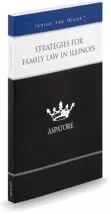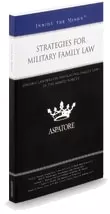1. Settlement Negotiations
In negotiations, there are multiple strategic goals that need to be met in order to be successful. They include:
- Determining whether a bargaining zone exists – that is, whether a mutually beneficial agreement is possible – and identifying the range of possible agreements;
- Changing the scope or emphasis of the negotiation in a way that makes a transaction mutually beneficial when otherwise there would be no possibility of finding a mutually beneficial agreement, or in a way that makes an agreement even more mutually beneficial than it otherwise would be;
- Exercising negotiating power to capture some or all of the benefit that the parties will create by reaching an agreement at the expense of the other party; and
- Appealing to procedural and substantive social norms to reach an agreement on how to divide the benefits that the parties create by entering into a transaction [or agreement].[1]
The initial efforts of the negotiation process should consist of the attorney doing their homework. This means that they should probe for any legally relevant information as well as to ask about their client’s biggest issues. It is equally important to consider the issues of the opposing party. When doing this, it is most efficient to use traditional discovery methods to uncover the opposing party’s information and potential issues. Of course, special or more specific methods of discovery may be required in different cases. Keep in mind that preparation is a tool, and it is not a guarantee that the parties will settle.
There are Model Rules of Professional Conduct t hat come into play when conducting negotiations. One of the most important rules is Rule 4-1.4 governing communication, which states that:
(a) A lawyer shall,
a. Keep the client reasonably informed about the status of the matter;
b. Promptly comply with reasonable requests for information; and
c. Consult the client with any relevant limitation on the lawyer’s conduct when the lawyer knows the client expects assistances not permitted by the Rules of Professional Conduct or other law.
(b) A lawyer shall explain a matter to the extent reasonably necessary to permit the client to make informed decision regarding the representation.
There are multiple opportunities or points in time where settlement is feasible. The first of these times are in pre-trial conferences. These conferences, in addition to the opportunity of settlement, may give counsel the opportunity to flush out procedural, evidentiary, or substantive issues. The next opportunity, and probably the most obvious, is at settlement conferences. It is important to check your local rules for timing, attendance, and possibility of mandatory proposals, and possible resulting orders. The third point in time where settling is possible is during case management conferences. The fourth major point in time is any other time prior to trial up to right before judgment is handed down. This can be done through written settlement proposals and settlement meetings. It is important to use these events, meetings, and times strategically depending on the status and strength of your client’s case. It may be more beneficial when it comes to settlement negotiations to wait until a point where you are able to demonstrate the strong evidence that your client has, or when you are able to exposes and demonstrate weaknesses in the opposing counsel’s case in chief.
There are also multiple considerations that need to be made when analyzing settlements. First, it would be advantageous to make a checklist of elements and possible concerns. It is a good idea to create a spreadsheet of assets and liabilities or your client and of opposing counsel’s client. This will allow for a quick evaluation of settlement proposals, and therefore, a quick response. Remember that it is important to remember that the repercussions of the settlement will reach far beyond the initial dollars and cents of the deal. Try to keep in mind any subsequent detriments that may arise in the near and distant future.
Also, keep in mind that oral agreements have been binding upon the parties. In Baldridge v. Lacks, an oral settlement agreement dictated into the record was binding.[2] On that note, it is usually better to keep any oral arguments tentative and finalize it with a written agreement instead. This will allow you or your client to add something that was inadvertently omitted from oral discussions. There is always a risk though that the opposing party will refuse to sign, but if prepared for trial, you should not be afraid to litigate the issue.
Disclosure is also an important part of negotiating settlements. While partial disclosure may not invalidate the agreement, it prohibits your client from making an informed decision. It is important to avoid accidental and potentially harmful mistakes by educating your client on the basic concepts and rights such as marital property as compared to separate property.
There are specific stages to negotiation that should be recognized by an attorney. Recognition of these stages and acting accordingly will make for a more likely than not successful negotiation. The first stage of negotiation is orientation and positioning.[3] This is essentially the first or opening interactions between the parties and their respective counsel, through letters, phone calls, and other sorts of interactions. The orientation stage is to become aware of what opposing counsel is like, what their strategy and style is, and what highs and lows their willing to go to in order to obtain a favorable agreement for their client.[4] With regards to position, it is essentially what their opening offer is. There are three main positioning strategies.[5] The first is a maximalist approach.[6] The advantages of maximizing the client’s opening position is that it conceals the client’s minimum or real expectations while the attorney seeks to discover the opposing parties real position.[7] This strategy will most likely lead to the opposing party reducing their expectations or evaluation of their case. There are detriments to this strategy though. An attorney whose opening position is too high, might deter the other party from settling because of the offer’s unreasonableness.[8] This strategy is most commonly seen in competitive negotiators, and it generally does not bring high and consistent returns.[9] Of course, another advantage is if the opposing party is unsure of the value of an element being negotiated, the high opening demand may raise the opposing party’s initial evaluation because of them being unsure.
Conversely, equitable positioning is aimed at arriving at a fair deal.[10] This is generally seen as the strategy that is most fair and efficient method of conflict resolution.[11] Utilizing this strategy generally avoids deadlocks and breakdowns of the party negotiations. Equitable positioning requires a certain degree of trust though. This is a positive and necessary attitude but an attorney should be aware of any other attorney that tries to take advantage of that trust. This type of negotiation strategy is less focused on positions, but more focused on interests.[12] A good policy to have if you use the equitable strategy is to not consider the case ripe enough for settlement until both parties are able to come to the negotiating table with a reasonable offer.
The last main strategy is integrative positioning.[13] This positioning is considered a problem-solving strategy.[14] The strategy relies on the belief that there are alternatives that can be discovered for solutions, and they are measured in value in light of the interests of the parties.[15] The integrative position tries to maximize the value for all parties involved.
The second stage of negotiation is argumentation.[16] An important aspect of this stage is information exchange. There is usually a dance of wording and phrasing in an effort to elicit pertinent information, while not disclosing any information that could hurt the value of an attorney’s potential settlement. The first concessions are normally made in the argumentation stage.[17] Concessions are important because they build trust between the parties and their counsel, as well as make progress towards a final agreement.[18] There are differences in concessions made depending on the position that is taken in the first stage.[19] For example, a maximalist will try to make as few concessions as possible, while trying to acquire as many concessions from the opposing party as possible. This is where problems arise and careful analysis of negotiation strategy is important.[20] There are different ways to respond to the concessions that are made to send certain messages to the other party. If the issue is a monetary amount, concessions patterned out to less and less value each offer can send the message that you are approaching your limit. Additionally, a concession pattern can include not budging, or making very small concessions, to either send the message that there is little to no wiggle room or that the opposing party’s offer is too unreasonable to warrant greater movement. It takes an effective and competent negotiator to determine which strategy is being used, and what problems there will be based on those strategies.
The third stage of negotiation is the emergence and crisis stage.[21] A deadline can be daunting in negotiations for some parties and extremely useful for others. Parties involved in negotiations with a deadline are wary of being exploited.[22] There are advantages of having a deadline though. A party can use the deadline to prepare the case, all while conducting negotiations. If negotiations fail, that attorney is prepared where the other party may be less prepared due to their reliance on the negotiation outcome. Deadlines may drive parties to a mutually beneficial position faster than if they had not had the deadline in place.
The last stage of negotiation is the agreement or final breakdown. The details of the deal should be worked out between the attorneys. Details of the agreement are important, as sometimes they determine overall favorability of an agreement.[23] If the parties are unable to arrive at a settlement, the case will go back into the court system for resolution. This can sometimes result from trying to take unreasonable advantage of the other party or trying to apply pressure of a deadline.
2. Trial Strategies
There are multiple strategies that can be employed within different aspects of the trial. These aspects, for the purposes of this presentation, include opening statements, direct examination, cross-examination, expert witnesses, closing arguments, objections, and order of proof.
In opening statements, it is important to explain the theory of the case. [24] The theory could persuade a juror to take a certain viewpoint during the presentation of evidence and the trial in general that could result in a favorable outcome for your client. It is also important to use themes and labels to certain aspects of the case such as persons or situations.[25] The use of these elements is important and should be used within the first couple minutes of your opening statement to leave a favorable impression on the jurors. Storytelling and understanding the audience is also important to remember and utilize.[26] It is equally as important to remember to request a verdict in your opening statement, so jurors are clear on your position and outcome of the trial.[27]
There are many things that should not be done in the opening statements, which include arguing or stating personal opinions.[28] It is also imperative not to overstate the evidence, because once the jury hears it, it may have less value to them since it was originally overstated. Consider the use of exhibits or visual aids in order to accurately reflect the value of certain evidence. Lastly, it is important to remember subconscious cues that may be given to the jury depending on your positioning and the delivery of your statement.
For direct examination, keep it short and focused on the most important elements.[29] It is important to keep this simple because most jurors, and people in general, usually only pay the appropriate amount of attention during the first 15-20 minutes of evidence and witnesses being presented.[30] An attorney should quickly get through the witness introduction and their background in order to elicit the important information from a witness within that time frame. Also, try and set the scene by having the witness describe the context of whatever they are testifying to. This will most likely keep the jurors engaged and interested in the witness’s testimony. Again, the use of exhibits and summarization of facts may help the jurors acquire all the relevant information that they need for them to render a favorable outcome for your client.[31] Lastly, remember your positioning during direct examination.[32] It is important that the jurors hear what you are asking, and the responses that you are eliciting, as well as your displayed body language.[33]
For cross-examination, try to elicit favorable testimony.[34] Getting the witness to admit those facts that support your case in chief, and are consistent with the theory of the case, themes and labels are crucial. In conducting a destructive cross-examination, try asking the type of questions that will discredit the witness or their testimony so that the jury will minimize its affect or even disregard the testimony entirely. [35] Remember, if you are going to conduct a destructive cross, make sure you elicit any favorable testimony prior to doing so.
Expert witnesses can make or break a case. It is important that you select the appropriate expert for your case. Make sure that the expert is qualified in their field and that they are a good communicator so that they can effectively and efficiently explain their opinions to the jurors.[36] Preparing the expert witness is almost a crucial element to a successful trial strategy. Make sure to go over what will be covered on direct-examination, what will be covered on cross-examination, and what exhibits will be used.[37] Have the expert witness review any of their prior articles, publications, speeches, and deposition transcripts so they are aware what they have previously stated, and to make sure they are aware of any weaknesses or attacks that may arise during their testimony.[38]
Closing arguments are equally important to opening arguments. The attorney should logically and forcefully present your case theory.[39] The themes and labels used in your opening argument should reappear in your closing argument as well to display continuity and reinforce the theme of your case.[40] Again, just as in opening arguments, try to avoid stating your own personal opinion, and just argue the facts.[41] This can be done by using effective visual aids and exhibits. The use of instructions and rhetorical questions can be effective in persuading the jurors to produce a favorable outcome for your client, as well as analogies and stories.[42] As far as weaknesses in your case go, deal with them candidly, and force your opponent to argue their client’s.
3. Drafting Final Orders
The order needs to accomplish multiple things.
- The order should accurately memorialize the court’s ruling, including any required findings of fact and conclusions of law;
- Provide a clear basis for appellate review;
- Guide actions of the parties and avoid future conflict; and
- Provide a foundation for future modifications if these are a possibility.[43]
If you are preparing a final order, preparations can start during the trial itself.[44] It is important to know the required findings of fact and conclusions of law which will need to be in the order and provide the law to the judge.[45] It may also be helpful to prepare summaries of evidence, spreadsheets, or timelines as appropriate to your case.[46] Remember, it is important to reference the exhibit numbers and witness testimony when preparing such materials. In complex or longer cases, it may be appropriate to propose findings of fact.[47]
Drafting preparation most commonly takes place post-trial. It is important to prepare the draft in a timely manner and to share said draft with all the appropriate parties properly and timely.[48] You are an officer of the court, and that means, when drafting this final order, you are representing the judge and the ruling that they handed down.[49] It is important to accurately reflect the ruling, so as not to get on the bad side of the judge because he doesn’t trust that you will accurately reflect his ruling.
The contents of this order should be well organized. A few key things to remember are to:
- Make sure the order is clear on preliminary issues;
- Make sure you know what the judge wants in the order;
- Recitations of evidence are not findings of fact;
- You must be careful with the shortcut of judicial notices; and
- Orders must be based on the record and not the judge’s memory.[50]
[1] Korobin, Russell, Negotiation Theory & Strategy, 33-34 (Erwin Chemerinsky et. al. eds., 2002).
[2] Baldridge v. Lacks, 883 S.W.2d 947 (Mo. App. E.D. 1994)(case was overruled, but on other grounds).
[3] Williams, Gerald R., Legal Negotiation and Settlement, 74-85 (1983).
[4] Id.
[5] Id.
[6] Id.
[7] Id.
[8] Id.
[9] Id.
[10] Williams, Gerald R., Legal Negotiation and Settlement, 74-85 (1983).
[11] Id.
[12] Id.
[13] Id.
[14] Id.
[15] Id.
[16] Williams, Gerald R., Legal Negotiation and Settlement, 74-85 (1983).
[17] Id.
[18] Id.
[19] Id.
[20] Id.
[21] Williams, Gerald R., Legal Negotiation and Settlement, 74-85 (1983).
[22] Id.
[23] Id.
[24] Mauer, Thomas, Trial Techniques, 61-93 (Erwin Chemerinsky et. al. eds., 6th ed., 2002).
[25] Id.
[26] Id.
[27] Id.
[28] Id.
[29] Mauer, Thomas, Trial Techniques, 95-165 (Erwin Chemerinsky et. al. eds., 6th ed., 2002).
[30] Id.
[31] Id.
[32] Id.
[33] Id.
[34] Id.
[35] Id.
[36] Mauer, Thomas, Trial Techniques, 309-400 (Erwin Chemerinsky et. al. eds., 6th ed., 2002).
[37] Id.
[38] Id.
[39] Mauer, Thomas, Trial Techniques, 401-461 (Erwin Chemerinsky et. al. eds., 6th ed., 2002).
[40] Id.
[41] Id.
[42] Id.
[43] J. Donna Stroud, What Judges Want You to Know about Drafting Orders, (October, 2015) (unpublished) (on file with University of North Carolina School of Government)(available at https://www.sog.unc.edu/sites/www.sog.unc.edu/files/course_materials/R3_Stroud%20Drafting%20Orders%20Campbell%209-17-15%20final.pdf).
[44] Id.
[45] Id. at 6.
[46] Id. at 7.
[47] Id.
[48] Id. at 9.
[49] Id. at 12.
[50] Id. at 12-24.





